Daisyworld
The Daisyworld model in the Unigis assignment has no geographical component. It uses a global temperature and albedo and daisy populations as fractions of the global coverage. I thought it would be interesting to implement the model in Idrisi, taking the effect of daisies on their direct surroundings into account.
The model uses the same rules as the non-geographical model, with a few changes. A random grid of daisies is computed for the first generation. Black daisies warm up their surroundings, whereas white daisies cool the pixels around them by reflecting radiation. Any pixel has a fixed chance to die during a generation, new daisies start to grow where conditions are favourable.
The following maps show Daisyworld over a number of generations. Temperature is indicated using colours ranging from blue (cool) to red (warm). White and black daisies are indicated using black and white pixels.
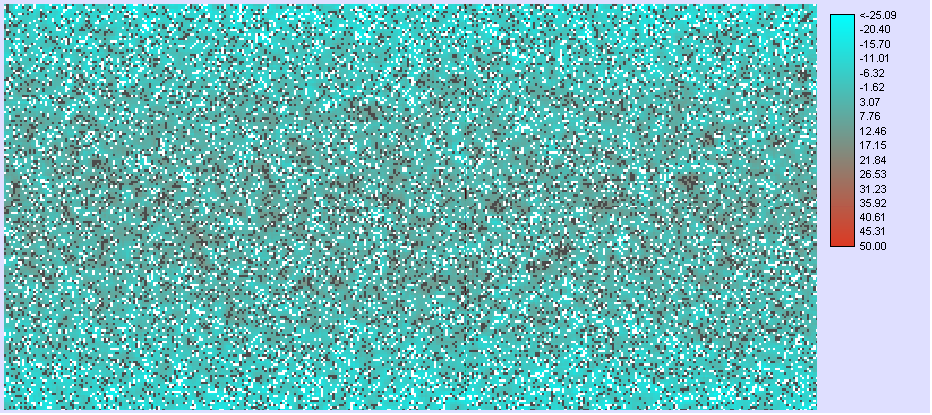
Initial state of Daisyworld. The daisies are almost randomly distributed over the planet
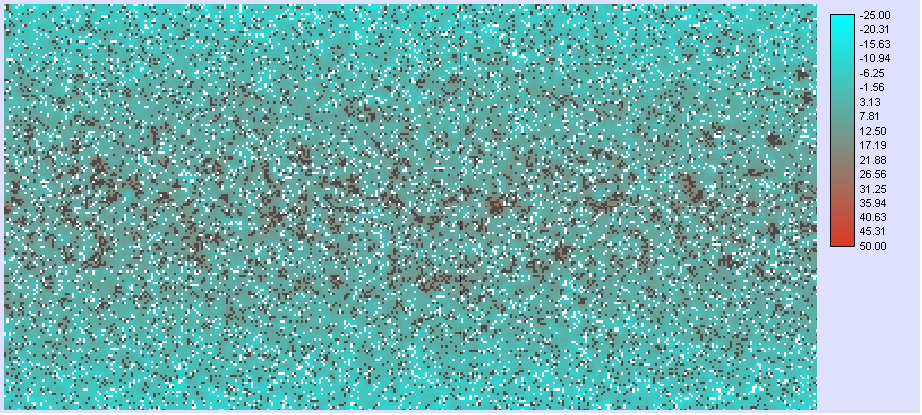
Daisyworld after two generations. The black daisies grow well on the warming equator.
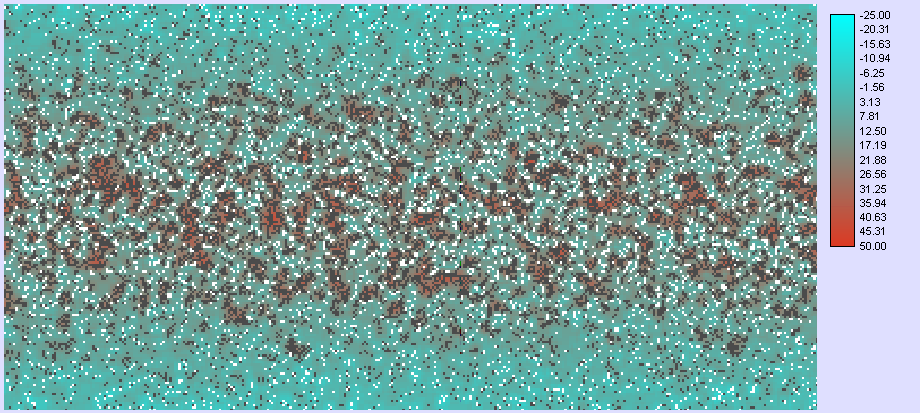
Daisyworld after 5 generations. Black daisies dominate the planet. Near the equator small populations of white daisies survive near to the warm air of of the black daisies.
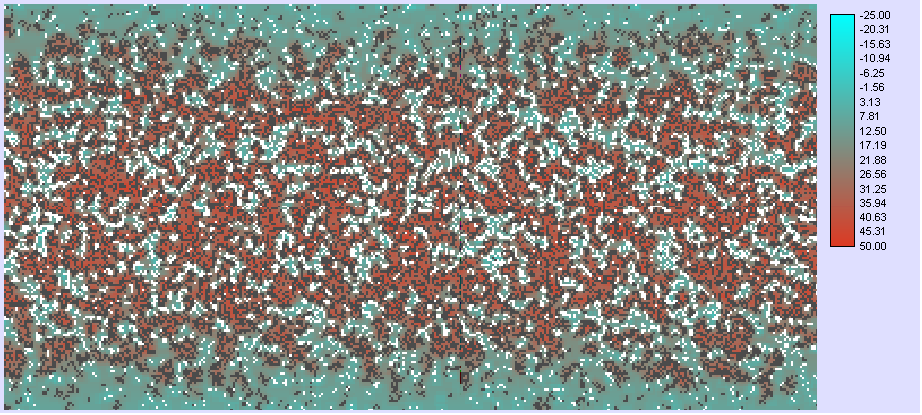
Daisyworld after 10 generations. Near the equator the white daisies start to thrive. In the moderate zones the black daisies dominate.

Daisyworld after 15 generations. Black daisies are restricted to the poles. Small groups of black daisies survive near the white populations around the equator.
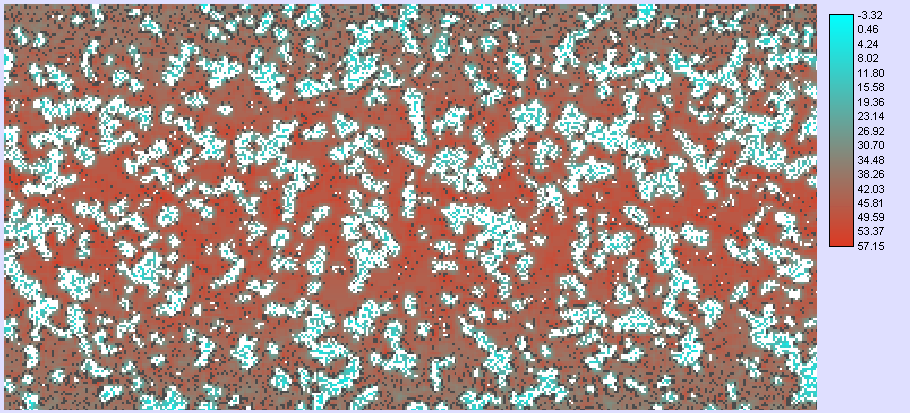
Daisyworld after 25 generations. The white daisies now dominate the planet. Their cooling effect is clearly visible in this map.
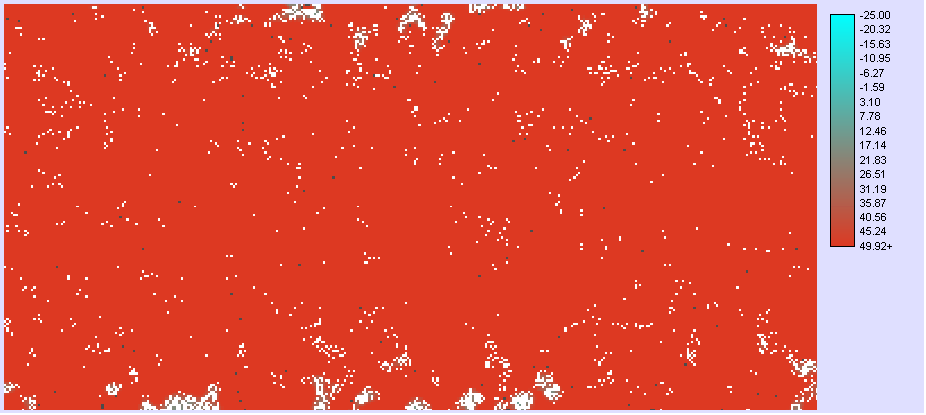
Daisyworld after 50 generations. The world is overheated. Only near the poles a few populations of white daisies exist.
| Unigis |
| Cholera map |
| Msc |
| Unigis |
| Feedback |